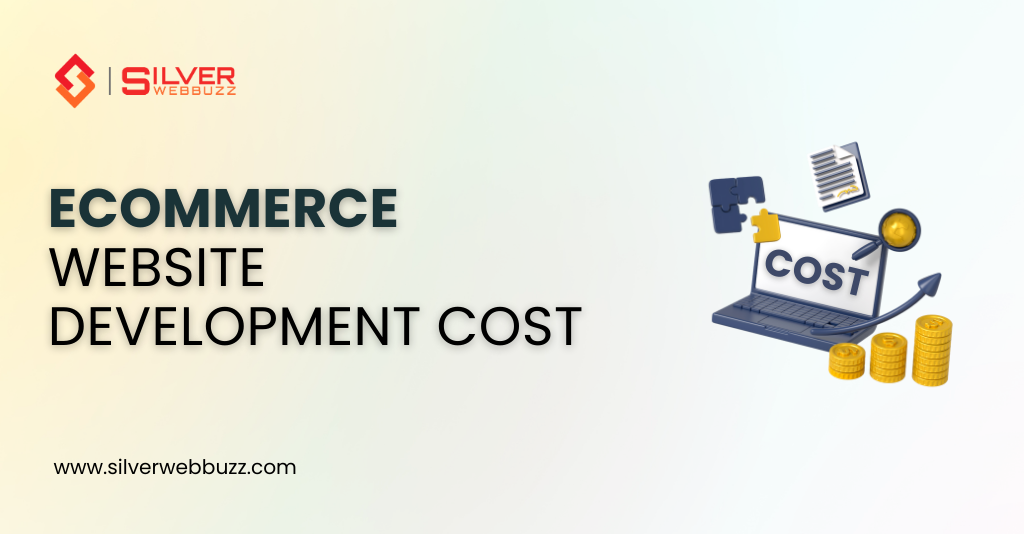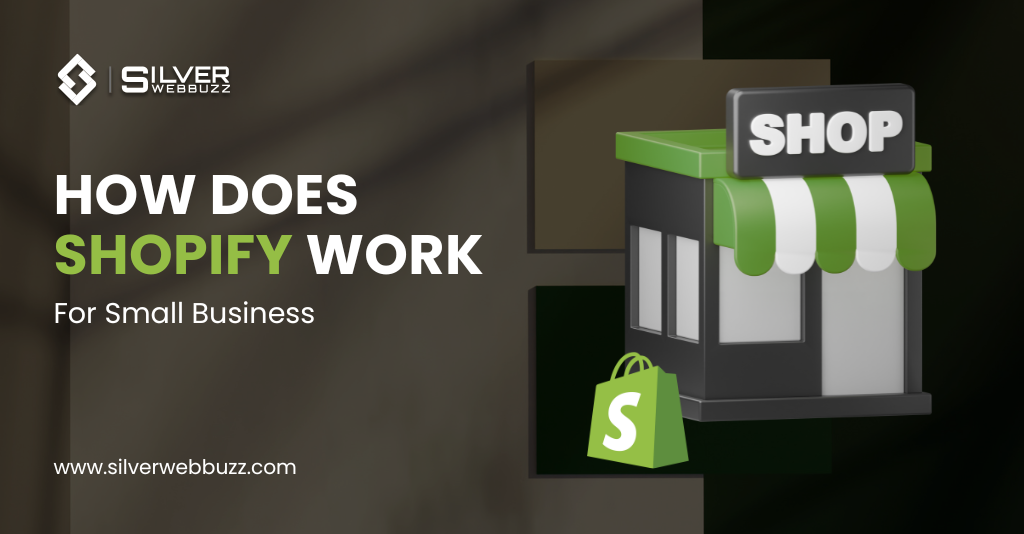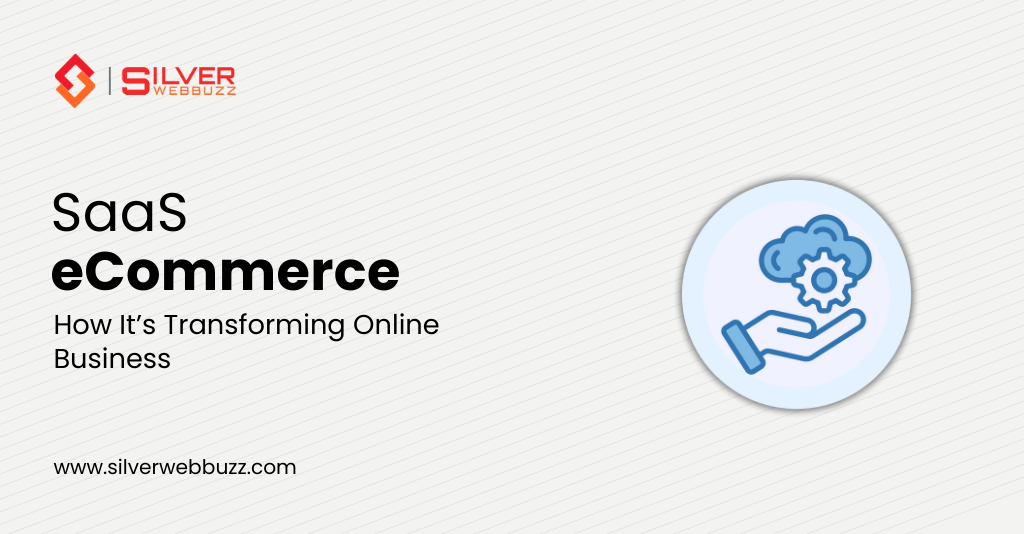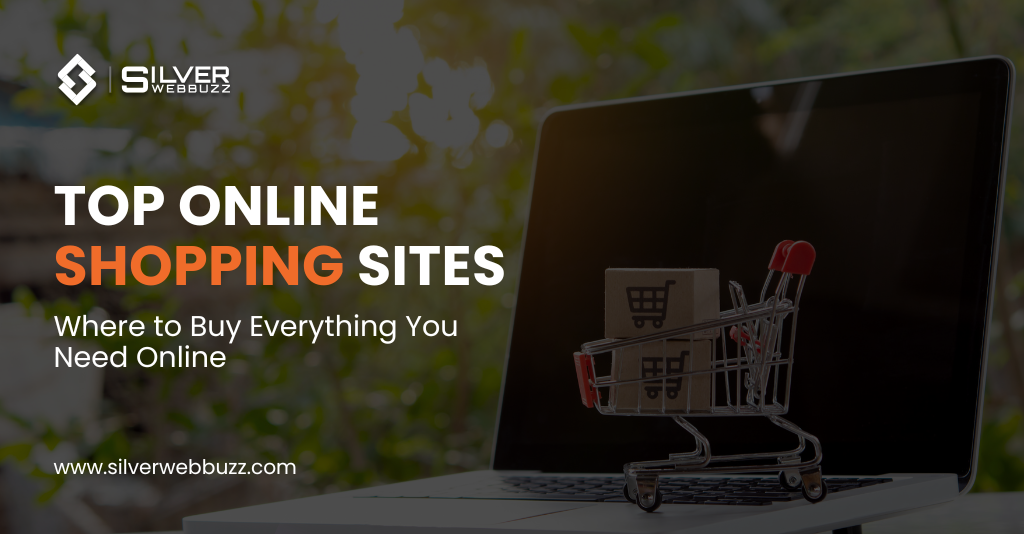If you want to start an online business in 2025, having a good eCommerce website is a must. But the first thing most people ask is what the ecommerce website development cost is? Knowing this early is very important because it helps you plan your budget and avoid surprises later. The truth is, there is no single price. The cost of a website depends on many factors—like how big your store will be, what features you need, the platform you choose, and how much customisation is required. Even where your developers are based can change the price.
With the demand for online shopping growing fast, more businesses are investing in websites. A simple online store can be built at a lower cost, while a large website with advanced features, such as AI tools or multi-language support, will cost much more. On average, how much does it cost to build an ecommerce website? It can range from affordable options for small businesses to higher investments for big companies. Having an idea of these costs will help you plan better and start your online business with confidence.
Elements That Influence eCommerce Website Costs
When planning an online store, understanding what drives the ecommerce website cost is essential. The total budget is shaped by several factorsranging from the scale of your business to the development method and even the region where your project is built. Let’s break these down.
Business Size & Scale
The size of your business plays one of the biggest roles in determining development costs. A small startup usually needs a simple online store with basic features like product listings, a shopping cart, and payment gateways. These websites can often be created on a smaller budget.
Mid-size businesses, on the other hand, require more robust functionality. Features such as advanced search filters, customer accounts, loyalty programs, or integrations with third-party systems start to increase costs. At this stage, ongoing expenses also grow because of higher hosting requirements and regular maintenance.
Enterprise-level eCommerce websites operate on an even bigger scale. These platforms often include custom integrations, multi-language support, AI-driven product recommendations, and high-end security. Naturally, the cost of development and long-term management for such large projects is significantly higher than for smaller businesses.
Chosen Development Approach
Another major factor that shapes the budget is the development path you choose.
- Custom development provides complete freedom to design and build a unique platform tailored to your brand. While it offers maximum flexibility, it also comes with the highest upfront cost and longer development timelines.
- Open-source platforms like Magento, WooCommerce, or PrestaShop are widely used and cost-effective in terms of licensing. However, customization and maintenance require skilled developers, which adds to the expenses over time.
- SaaS platforms such as Shopify, BigCommerce, Wix, or Squarespace are subscription-based solutions. They are easier to set up, user-friendly, and come with predictable monthly costs. While they may not offer the same level of customization as custom builds, they are a great choice for startups or growing businesses looking for scalability without heavy upfront investments.
Region of Development
Where your website is developed also has a big impact on your budget. Development costs vary widely depending on the region.
For example, hiring developers in North America can cost anywhere from $80 to $150 per hour, while in Europe, rates typically range between $50 and $100 per hour. In Asia, countries like India often provide highly skilled developers at much more affordable rates, ranging from $20 to $50 per hour.
This regional difference means the same project could have drastically different price tags depending on where it’s built. Many businesses choose to outsource development to regions with lower costs to balance quality and budget.
eCommerce Website Development Cost Breakdown
In 2025, the ecommerce website development cost depends on platform, design, hosting, features, and ongoing maintenance.
eCommerce Platform / License Cost
One of the biggest choices you’ll make is which eCommerce platform to build your store on. Popular options in 2025 include Shopify, Magento (Adobe Commerce), WooCommerce, BigCommerce, and Wix. Each platform comes with different licensing models:
- Shopify: Monthly subscription starting from $29 and going up to $399 for advanced plans. Shopify Plus (enterprise-level) can cost thousands of dollars per month.
- Magento (Adobe Commerce): The open-source version is free, but enterprise licenses may cost from $22,000 to $125,000 annually.
- WooCommerce: Free as a WordPress plugin, but you’ll need to pay for hosting, themes, and extensions.
- BigCommerce: Pricing starts around $39 per month, scaling up based on features.
- Wix: Offers eCommerce plans starting at about $23 per month.
When deciding between free vs. paid vs. enterprise solutions, consider your business size and growth plans. Free or open-source platforms may seem affordable, but they usually require more investment in hosting, customization, and plugins. Paid subscriptions and enterprise licenses often bundle hosting, support, and scalability.
Cost range: From $0 for open-source platforms up to $125,000+ annually for enterprise licenses.
Website Hosting Cost
Hosting is where your website lives online. The type of hosting you choose directly impacts performance, security, and scalability.
- Shared Hosting: Cheapest option ($2–$10/month), but resources are shared, so it’s not ideal for high-traffic sites.
- VPS (Virtual Private Server): More reliable, with dedicated resources. Costs range from $20 to $80/month.
- Dedicated Hosting: Exclusive server for your site. Prices usually start at $80/month and can go up to $500+.
- Cloud Hosting: Flexible and scalable solutions like AWS, Google Cloud, or Azure. Entry costs are around $30/month, but high-traffic businesses may spend thousands monthly.
Traffic matters—if you expect large volumes of visitors or run sales campaigns, you’ll need stronger hosting to keep the site fast and reliable.
Domain Name Cost
Every website needs a domain name, and the pricing depends on whether you choose a standard or premium domain.
- Standard domains (.com, .net, .org) usually cost between $10 and $50 annually.
- Premium domains (short, brandable names) can cost hundreds or even thousands of dollars. For example, single-word domains like “Shop.com” are highly valuable.
- Renewals and hidden fees: Many providers offer cheap first-year deals but charge higher renewal fees.
Investing in a good domain is crucial because it directly impacts branding and trust.
SSL Certificate Cost
An SSL certificate secures your website and shows visitors the padlock symbol in their browser, something customers now expect. It also improves SEO rankings.
- Free SSL: Services like Let’s Encrypt provide basic certificates at no cost.
- Paid SSL: Prices range from $50 to $500 annually, depending on validation level (Domain Validation, Organization Validation, or Extended Validation).
For eCommerce websites handling payments, a stronger SSL certificate is highly recommended.
Website Design & User Experience (UI/UX) Cost
The ecommerce website design cost depends on whether you choose pre-built templates or go for custom designs.
- Pre-built themes/templates: $50–$200 for a one-time purchase.
- Premium themes: $300–$1,000 with more flexibility and support.
- Custom design: $5,000–$50,000 depending on complexity and agency rates.
Today, responsive and mobile-first design is essential, as most customers shop using smartphones. Good design also means integrating your brand identity logos, colors, typography—to make your store unique.
eCommerce Development Cost
Development is the most significant factor in the total ecommerce website price. It involves both backend and frontend work:
- Backend development: Features like product catalog, checkout, order management, and integrations.
- Frontend development: User interface, visuals, and smooth navigation.
- Advanced features: Multi-currency, multi-language, personalization, AI recommendations, and AR/VR experiences.
Average development costs:
- Basic site: $5,000–$10,000
- Mid-level site: $10,000–$40,000
- Enterprise-level site: $50,000–$200,000+
Extensions & Plugins / Add-ons
No eCommerce website is complete without extensions. These add new functions like payment gateways, shipping calculators, CRM integration, or marketing tools.
- Free plugins: Available for basic needs.
- Premium plugins: Can range from $50 to $1,000+ each, depending on functionality.
Examples include SEO tools, analytics dashboards, chatbots, and email marketing integrations. While individually affordable, costs can add up if your site relies on many plugins.
Payment Gateway Fees
Finally, don’t forget about payment processing costs. Every provider charges transaction fees, and over time, this becomes a significant expense.
- PayPal: 2.9% + $0.30 per transaction
- Stripe: 2.9% + $0.30 per transaction
- Razorpay (India): Around 2% per transaction
- Authorize.Net: Setup fee + monthly fee + per-transaction charges
When choosing a payment provider, look at both transaction fees and ease of integration. A lower fee structure can save thousands annually if you process large volumes.
Additional & Hidden Costs of Running an eCommerce Website
Beyond the initial ecommerce website development cost, ongoing expenses like marketing, content, maintenance, and security play a big role in long-term success.
SEO & Digital Marketing Costs
Even the most beautifully designed website won’t attract customers without proper visibility. That’s where SEO and digital marketing come in.
- On-page SEO includes keyword optimization, metadata setup, site structure, and technical performance improvements. These elements ensure that your website ranks higher on search engines and delivers a seamless user experience.
- Off-page SEO focuses on building backlinks, guest posting, and content marketing strategies. This helps establish authority and trust for your brand.
- Paid advertising through Google Ads, Facebook, and Instagram is another major cost factor. While organic SEO takes time, paid campaigns bring quick results but require ongoing investment.
- Influencer marketing and brand collaborations have also become powerful strategies in 2025, often requiring partnerships with social media creators to boost reach.
Monthly SEO and marketing costs can range from $500 for small businesses to $10,000+ for larger enterprises, depending on competition and scale. Over a year, this becomes a major budget line—often as high as or even higher than the original cost of a website.
Content Creation Costs
High-quality content is the backbone of any eCommerce business. Beyond just listing products, you need compelling visuals and words that persuade customers to buy.
- Product photography: Professional photos are essential for showcasing products effectively. Costs can range from $20 per image to $1,000+ for full catalogue shoots.
- Copywriting: Engaging product descriptions, landing pages, and blog posts requires skilled writers. Freelancers may charge $50–$200 per page, while agencies may cost more.
- Video marketing: Reels, product demos, and explainer videos are now crucial for platforms like Instagram, YouTube, and TikTok. Depending on quality, these can range from $500 to $5,000 per campaign.
- Content creation is not a one-time cost. To remain competitive, businesses must consistently update and refresh content, making this an ongoing investment.
Maintenance & Support Costs
Many new store owners underestimate website maintenance fees, but they’re vital for smooth operation. Without regular support, sites can break, lose performance, or become vulnerable to hacks.
- Bug fixes, updates, backups, and patches ensure your website stays functional and secure.
- Some businesses hire dedicated support teams, which may cost $500–$5,000 monthly, while others opt for on-demand services, paying per issue.
- A common industry rule is that annual maintenance costs equal 10–20% of the overall ecommerce website development cost.
This makes it important to factor maintenance into your budget early, even if you’re buying pre-built ecommerce website packages.
Security & Compliance Costs
Security is one area you cannot afford to ignore. Online shoppers expect their data and payments to be safe, and regulators demand compliance.
- PCI DSS compliance is mandatory for any website that processes payments. Achieving and maintaining compliance can cost anywhere from $500 to $50,000 annually, depending on store size.
- GDPR and CCPA compliance require careful handling of customer data, privacy notices, and consent management—sometimes needing legal and technical support.
- Firewalls, anti-malware, and monitoring tools protect against hacks and data breaches. Subscription costs range from $100 annually for small businesses to several thousand for enterprises.
The cost of security and compliance depends heavily on your store’s size. A small shop may manage with a few hundred dollars annually, while enterprise-level stores often spend tens of thousands to maintain full protection.
Cost Variations by Type of eCommerce Website
The ecommerce website development cost varies by type—small business sites are affordable, mid-size platforms cost more with added features, and enterprise solutions require the highest investment.
Small Business / Startup eCommerce Website
For startups and small businesses, keeping costs low is usually the top priority. Most owners choose ecommerce website packages that include basic features like a product catalog, shopping cart, and payment gateway integration. These websites often rely on template-based designs with limited customization, making them quick to launch and affordable.
A small business site may use platforms like Shopify, WooCommerce, or Wix, where templates and plugins make setup easier. The cost of a website at this level generally covers a domain name, hosting, SSL, and a standard theme. Extra features like marketing tools or product photography may add to expenses, but the overall setup remains budget-friendly.
Cost estimate range: $2,000 – $10,000, depending on design, plugins, and ongoing maintenance. For businesses exploring how to start an ecommerce business without money, this tier is often the entry point since free trials, low-cost hosting, and basic templates help minimise upfront investment.
Mid-Size eCommerce Website
As businesses grow, they need more than a template-based solution. Mid-size eCommerce websites typically include custom themes, multiple plugins, and the ability to handle moderate traffic without performance issues. At this stage, owners may invest in stronger hosting, custom development for unique features, and marketing automation tools.
Platforms like BigCommerce, advanced Shopify plans, or WooCommerce with premium extensions are common choices here. These setups often include integration with third-party tools such as inventory management systems, shipping calculators, and CRM software.
While the online store setup costs are higher than small business sites, they allow brands to create a stronger digital presence. Businesses also start allocating budgets for SEO, advertising, and professional content creation, which can influence how much they spend overall.
Cost estimate range: $15,000 – $50,000, depending on the level of customization, design complexity, and additional integrations. Businesses in this category often ask, How much does ecommerce make at this level? The answer largely depends on marketing strategy and niche demand, but investing in a mid-size site usually enables faster scaling and higher returns.
Enterprise-Level eCommerce Website
For large-scale businesses and established enterprises, the focus shifts to advanced capabilities, seamless user experiences, and scalability. Enterprise-level websites are fully customized solutions built to handle massive traffic, large product catalogs, and global customers.
These websites go far beyond basic features. They often include high-level security, advanced payment systems, AI-driven product recommendations, ERP and CRM integrations, multi-currency support, and analytics dashboards. A fully custom design ensures that the brand identity stands out while offering flexibility for growth and international expansion.
The ecommerce website development cost at this level is significantly higher because it requires skilled developers, UX/UI specialists, and ongoing support teams. Enterprise solutions are rarely built on standard templates; instead, they use platforms like Magento (Adobe Commerce), Salesforce Commerce Cloud, or completely custom frameworks.
Cost estimate range: $100,000 – $500,000 or more, depending on the complexity, integrations, and global compliance requirements. For enterprises, the question is not just about the cost of a website but about building an infrastructure that supports long-term growth and maximizes profits.
How to Reduce eCommerce Website Development Costs Without Compromising Quality
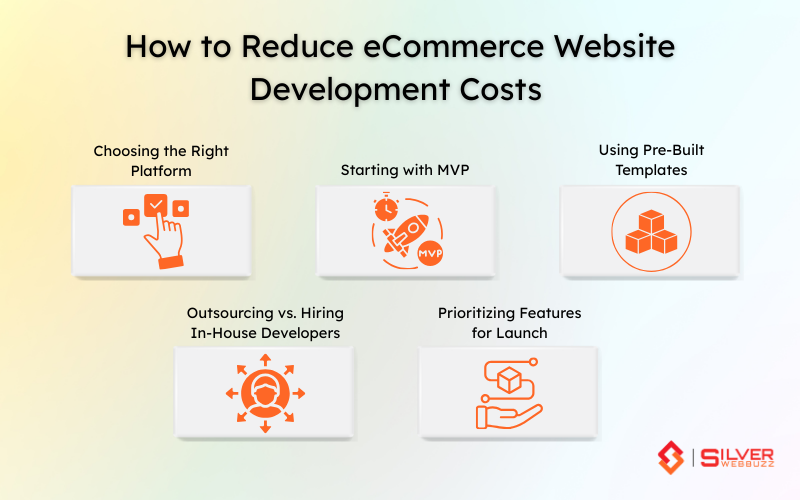
Ecommerce website development cost can be reduced with smart planning and strategic choices without losing quality.
Choosing the Right Platform
The platform you choose has a huge impact on both cost and scalability. Open-source solutions like WooCommerce or Magento may have lower entry costs but require technical knowledge, while platforms like Shopify and BigCommerce come with monthly subscriptions that include hosting and support. By aligning your business needs with the right platform, you can avoid unnecessary spending and simplify future upgrades.
Starting with MVP (Minimum Viable Product)
Instead of building a full-featured website right away, focus on an MVP. This approach lets you launch quickly with only the core functions—product catalog, payment options, and a basic design—while saving advanced features for later. Not only does this lower initial costs, but it also allows you to test customer response before making bigger investments.
Using Pre-Built Templates
Custom designs look attractive, but they significantly raise the overall budget. Pre-built templates offer professional layouts at a fraction of the price and can still be tailored to match your brand identity. This is one of the simplest ways to cut down website development strategy expenses while maintaining a polished, user-friendly look.
Outsourcing vs. Hiring In-House Developers
Hiring an in-house team often comes with high salaries and ongoing costs. Outsourcing to skilled freelancers or agencies—especially in regions with competitive pricing—can be a cost-effective solution. Many businesses strike a balance by outsourcing development while keeping marketing and customer support in-house.
Prioritizing Features for Launch
It’s tempting to add every feature at once, from AI recommendations to advanced analytics. However, prioritizing only the essentials for launch helps manage your budget. Additional features can always be added later as the business grows and revenue increases.
Understanding the Scope of Ongoing Support Services
Building an ecommerce site is just the start—keeping it running smoothly is where ongoing support comes in.
1. Technical Support
Ongoing technical support covers a wide spectrum of backend needs. This includes monitoring your server performance, managing your hosting environment, and addressing bugs or code-related issues as they arise. Whether it’s a minor glitch affecting checkout functionality or a critical update for security, having reliable developers on call is essential. These tasks are not one-time setups—they require continuous attention to keep your ecommerce operations smooth and uninterrupted.
2. Marketing Support
To attract and retain customers, businesses rely heavily on marketing services post-launch. From regular SEO optimization and paid ad management (PPC) to content creation and social media strategy, digital marketing support plays a pivotal role. Search engines frequently change their algorithms, and competition in the ecommerce space is fierce. Without strategic marketing, even the most beautiful online store can get buried in search results.
3. Customer Support Integration
Exceptional customer experience is no longer optional. Integrating systems like AI-powered chatbots, live helpdesk platforms, and ticketing workflows ensures your customers always have a way to reach out and receive prompt assistance. As customer expectations evolve, so must your support capabilities.
4. Annual Cost Estimates
In terms of the ecommerce website development cost, ongoing support services can range from $3,000 to $15,000+ annually, depending on the complexity of your site and the level of support needed. Technical maintenance, marketing, and customer service tools all contribute to this recurring investment. However, these costs are crucial for scaling successfully and minimizing costly downtime or lost sales opportunities.
Building an eCommerce Website with Silver WebBuzz
Partnering with an expert eCommerce development company like Silver WebBuzz ensures your online store is built for performance, scalability, and user experience. From intuitive design to seamless functionality, their team focuses on creating tailored solutions that drive results. With expertise in custom development, payment integration, and mobile optimization, Silver WebBuzz helps brands launch confidently. Whether you’re starting fresh or upgrading an existing platform, their strategic approach sets the foundation for sustainable online growth.
